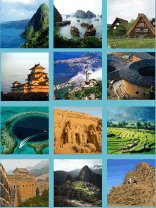Guide 4: Engaging local communities and businesses
What this guide will tell you:
This guide will tell you how to reach out and engage with local businesses and the community in a dialogue explaining the mutual benefit that comes with making tourism more sustainable.
Steps to success:
- Why this matters
-
Dialogue with local businesses and the community is imperative, even when it is difficult, or their aspirations clash with protecting the OUV of the site. Remember that dialogue educates all parties. People start to learn each other’s languages and terminologies, and over time, understanding grows. Stakeholders will have a greater sense of the limits of growth, the responsibilities that fall upon everyone in the destination to protect its natural or cultural heritage, and also how to deliver benefits sustainably to local people. Successful, sustainable initiatives have been developed with active, local buy-in and support – local people are the heart of sustainable tourism.
-
 Talk and listen to the host community and businesses
Talk and listen to the host community and businesses -
Build relationships with the existing community and tourism organisations. They can help you to communicate with local people and businesses. If you explain your intentions to develop a destination that offers these people greater opportunities, then there should be a willingness to work with you. If there is an existing tourism DMO and strategic planning process, then this would be your obvious starting point.
Create on-going opportunities to listen to local people and businesses, as well as discovering the issues and challenges they face. Through these discussions, you will be able to develop a list of their most pressing concerns and aspirations for the future. List the positive and negative impacts of tourism on local people and businesses – this should be a key part of understanding tourism (Guide 1). If a forum does not already exist, create one for this discussion.
Ensure that the aspirations and challenges of the host community and the local businesses are given a high status of importance in the strategy for the destination. This does not mean that everyone can have what they want, but it does mean that where aspirations are realistic, appropriate, and add value to a sustainable destination (for instance, equal opportunities between men and women), they are taken seriously and embedded in the approach to the future. Too many destinations focus solely on the visitor experience and forget about the importance of ‘liveability’. The views of the local communities should be regularly monitored, recorded, and publicly reported in a timely manner as a useful check against inappropriate development or activities.
In some cases, communities may require access to heritage sites for reasons that are fundamental to their culture and way of life – you should monitor, protect, and restore local community access to natural and cultural sites when appropriate.
-
 Identify and communicate sustainable, economic local opportunities
Identify and communicate sustainable, economic local opportunities -
Look strategically at how local people and businesses can secure greater benefit from the destination and the heritage attractions. This does not happen automatically; it requires conscious efforts and investment to identify – and make real – new transport, accommodation, food and drink, retail, leisure, or guiding and interpretation opportunities. List three actions that can economically empower local people and businesses, and aim to make them a reality. Consider carefully how changes to the destination may affect local people and businesses. For example, if a green bus scheme replaces hundreds of small taxis, will there be a negative effect on the local community?
Build the visitor experience around learning about, experiencing, and respecting the knowledge, values, stories, culture, and activities of the host community. These people are not ‘extras,’ but the stars and hosts of your destination. Research has shown that some of the humblest occupations in a destination have a massive effect on the visitor experience – taxi drivers and hotel receptionists are crucial in greeting visitors and explaining the distinctiveness of a destination’s cultural and/or natural heritage. Do not underestimate their value.
Talk to local businesses and potential entrepreneurs about the ‘barriers-to-entry’ they face in the marketplace for services, products, and experiences. Some of these will require capital and can be addressed by fundraising or an investment strategy (see Guide 9 on Investment). Others may be as simple as having the skills to become a guide or understanding what visitors might want to experience and pay for at the destination (see Guide 7 on Value).
Encourage, celebrate, and reward tourism businesses that act responsibly. When offering visitors a choice of accommodation, transport, or food and drink, give prominence to those businesses that train local people, invest in socio-economic development and/or education, or use sustainable local products and services. This gives businesses an incentive to be sustainable – a bottom line advantage over their less responsible competitors.
Secure resources and investment from the tourism sector or visitors to deliver community aspirations. Communities and local businesses will be sceptical until they see money or effort being applied to their concerns, or being used to make their lives better. Some sites have already established Community Development Funds that secure investment and donations from the tourism sector and visitors to invest in projects that empower local people. This reflects well on the destination. Giving visitors some degree of ‘ownership’ over transport, accommodation, retail, food and drink, or leisure, is not only economically beneficial, but it also helps create a sense of responsibility and ownership of tourism to the local community.
It is not beneficial for the local people or visitor experience if the products, services, and experiences offered are provided entirely by external or foreign businesses. Destinations should create opportunities for local people to establish their own businesses and enter the marketplace.
Do not get too tangled up in academic, long-term strategic planning – you need to move forward and establish the credibility of your strategy and management. In your strategic analysis (Guide 2), you should have identified some quick, and possibly low cost, wins – things you can do right now to show that the destination is serious about sustainability and supporting the socio-economic development of the local community. These quick wins are a statement of intent and credibility that will sustain the initial enthusiasm of stakeholders.
Develop systems of law and good practice to prevent the exploitation of anyone through tourism – particularly children, adolescents, women, and minorities. Such laws and practices should be widely communicated so that everyone in the destination understands that exploitation is not acceptable or a part of the tourism initiative that will be undertaken.
Develop clear rules and regulations for what is expected of the host community and businesses. In many destinations, businesses simply want to know what they can and cannot do.
-
 Empower the host community by telling their story in the site
Empower the host community by telling their story in the site -
World Heritage sites have a duty to share their values and their OUV with other people. However, sometimes the host community has a culture, identity, and/or story that is different from the UNESCO-defined OUV of the site, or one that does not complement the wishes of tourists. Sometimes this can leave locals rather marginalized, and when they are not part of the narrative, they may sometimes be ignored, disrespected, or pushed out of the way. We believe that sustainability requires a site to tell both the OUV story and the story of the host community and culture. You must help visitors to understand the historic and contemporary realities of the place they are visiting, as well as respect or engage with both of these narratives. This may sound like rhetoric, but it is an essential step to building respect and trust between those working on the conservation and those living around, or within, a historic site. It sends a signal to the host community that they matter.
There is growing evidence that storytelling comes to life beyond museums and interpretation panels. People in the host community are crucial to this process. Research has shown that tourists spend less than 10% of their time in museums or galleries – the rest of the time is spent in airports, railway stations, taxis, hotels, restaurants, bars, shops, on the street, by the pool, or on the beach. If we want to become excellent at storytelling and interpretation, we need to take the stories of the site and the community into those places (see Guide 5 on Communication). Great sites make members of the community – particularly hotel receptionists and taxi drivers – champions, ambassadors, and storytellers for the site. They offer them training, education, site visits, and support to become adept at explaining simple, but critical things about the OUV and the host community. Visitors find such knowledge and passion infectious.
Guiding is a professional activity of the highest importance and deserves to be managed like any other issue, with a proper system of training, accreditation, badging, and policing to protect visitors and guides, themselves, from untrained individuals undermining the system. Make good use of the local community and enable those interested in being a guide to go through the proper process without being barred from entry because of race, religion, class, ethnicity, or gender.
Working with schools and educational organizations is also critical to make sure that everyone who grows up and is educated in the host community knows about the site and its values. They will, in turn, become guardians, champions, and ambassadors of the site too.
Raise your aspirations for the local community – not everyone wants to sell low-value souvenirs. Some sites need to think carefully about how tourism can deliver meaningful opportunities for local people. This means working with community groups to think about the skills, capital, and the technologies they may need (and want!) if they are to have a good standard of living in their locality.



